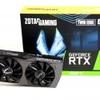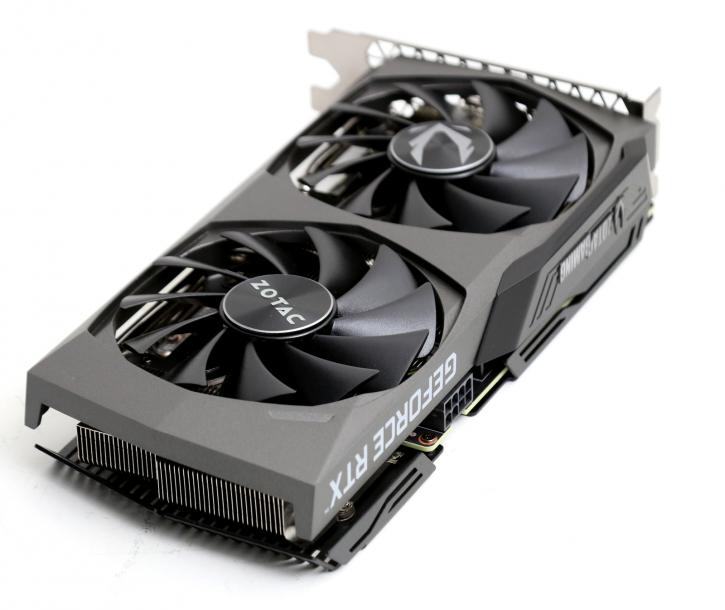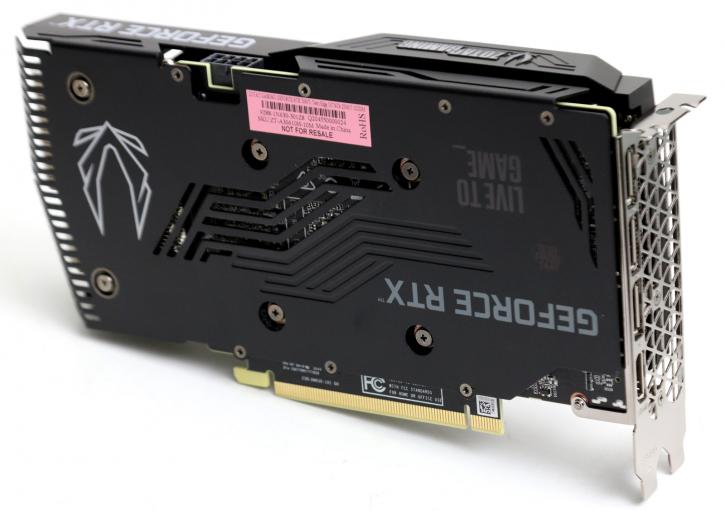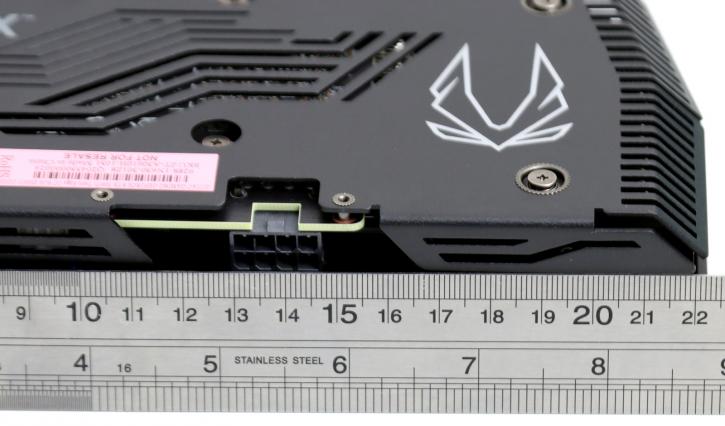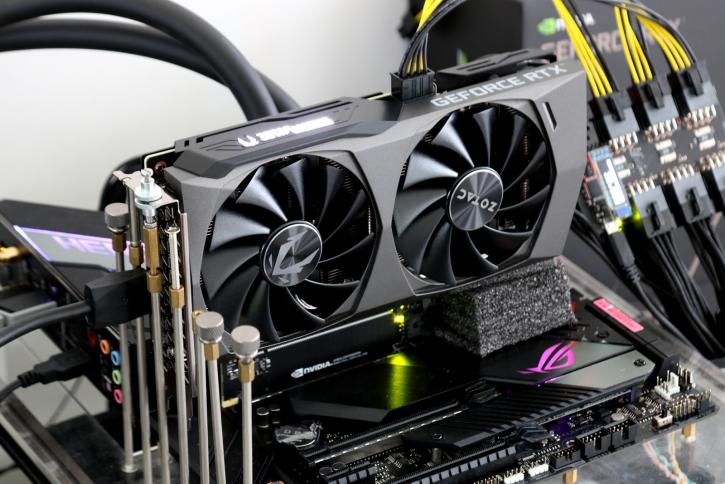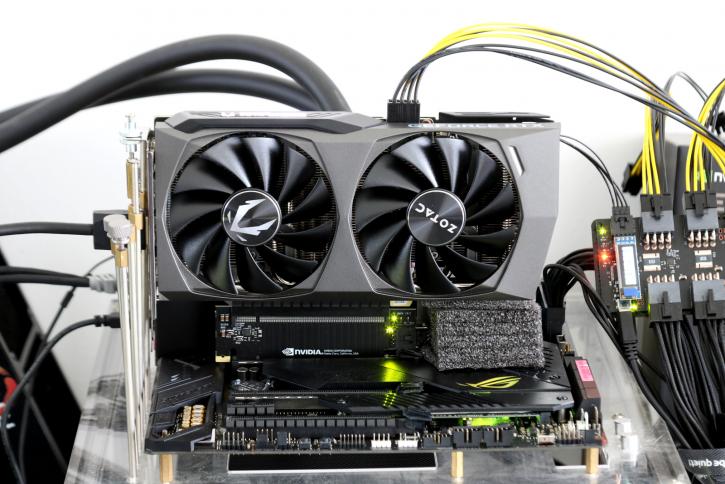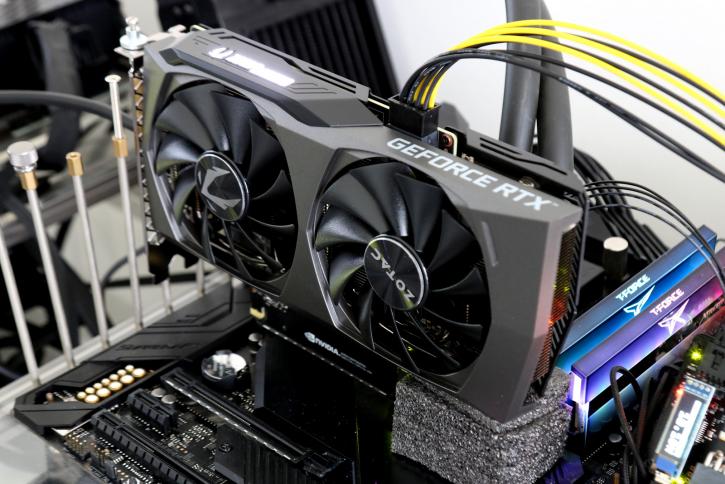Product Photos
Product Photos
The Ampere series will replace the Turing lineup, which will fade out of the market as these cards sit right on top of their prices yet are much faster. The GeForce RTX 3070 has 5,888 stream/Shader processors; the RTX 3060 Ti has been dimmed down a small notch. 4,864 stream/Shader processors (38 CUs), 80 ROPs, 152 Texture units, and the capability to do the trick or two more with its 152 Tensor and 38 Raytracing cores.
- The reference 3060 Ti cards have a peak boost clock up-to 1.66 GHz, with the base clock hovering in the 1.41 GHz domain.
- The reference 3070 cards have a peak boost clock up-to 1.73 GHz, with the base clock hovering in the 1.50 GHz domain.
- The reference 3080 cards have a peak boost clock up-to 1.71 GHz, with the base clock hovering in the 1.44 GHz domain.
- The reference 3090 cards have a peak boost clock up-to 1.70 GHz, with the base clock hovering in the 1.40 GHz domain.
The ZOTAC card clocks in at a boost frequency of 1695 MHz. Should you not get the OC model, then that value is reference 1665 MHz. These are out of the box configured clock frequencies. As mentioned, it weighs in at just over 1 kg, is 2.5 slots wide, and its length is just over 22cm. The outer shell is made from plastic, and you'll spot a protective backplate. As stated, this is a value proposition, and the design does look good.
For those wondering, the graphics card sits higher (extended) due to a riser on the PCIe slot. We applied a new methodology to measure power consumption. That does, however, require some juggling acts with the cards.
